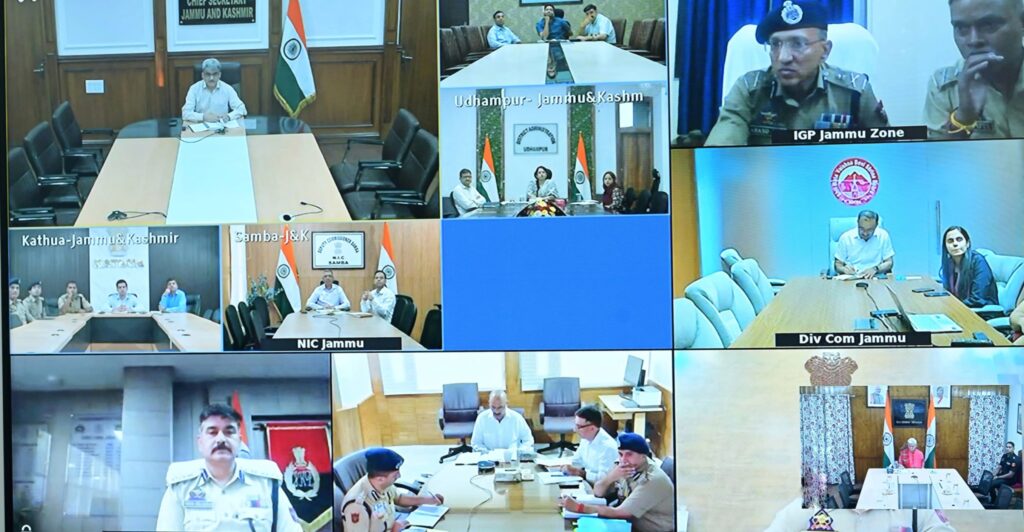Indian Armed Forces Detail Operation Sindoor Success in High-Level Press Briefing
Samba Times Special

New Delhi, May 12, 2025 – In a significant joint press briefing held at the National Media Centre, senior commanders from the Indian Army, Air Force, and Navy provided a comprehensive overview of Operation Sindoor, a retaliatory military operation launched on May 7, 2025, in response to the April 22 Pahalgam terror attack that claimed 26 lives. The briefing, led by Director General of Military Operations (DGMO) Lieutenant General Rajiv Ghai, Director General Air Operations Air Marshal Awadhesh Kumar Bharti, and Director General Naval Operations Vice Admiral AN Pramod, underscored India’s robust military capabilities, strategic precision, and unified tri-service coordination.
Operation Sindoor: A Decisive Response to Terrorism
Lieutenant General Rajiv Ghai opened the briefing by emphasizing the shifting nature of terrorism, noting that recent attacks have increasingly targeted innocent civilians. “In the last few years, the character of terrorist activities has changed. Innocent civilians were being attacked. By the time it reached Pahalgam, paap ka ye ghada bhar chuka tha (the cup of sin had overflowed),” he said, referencing the brutal attack on tourists and pilgrims.
He confirmed that Operation Sindoor targeted nine terror hubs across Pakistan and Pakistan-occupied Jammu and Kashmir (PoJK), eliminating over 100 terrorists, including high-value targets like Yusuf Azhar, Abdul Malik Rauf, and Mudasir Ahmed, linked to the 1999 IC814 hijacking and the 2019 Pulwama attack.
Ghai highlighted the operation’s meticulous planning, which involved “diligent and microscopic scarring of the terror landscape” to identify and neutralize key terror infrastructure, such as camps in Muridke and Bahawalpur, known for breeding notorious terrorists like Ajmal Kasab. He also noted that Pakistan’s response, including violations of the Line of Control (LoC) and civilian-targeted attacks, reflected a “rattled and erratic” adversary, with 35-40 Pakistani military personnel killed between May 7 and 10.
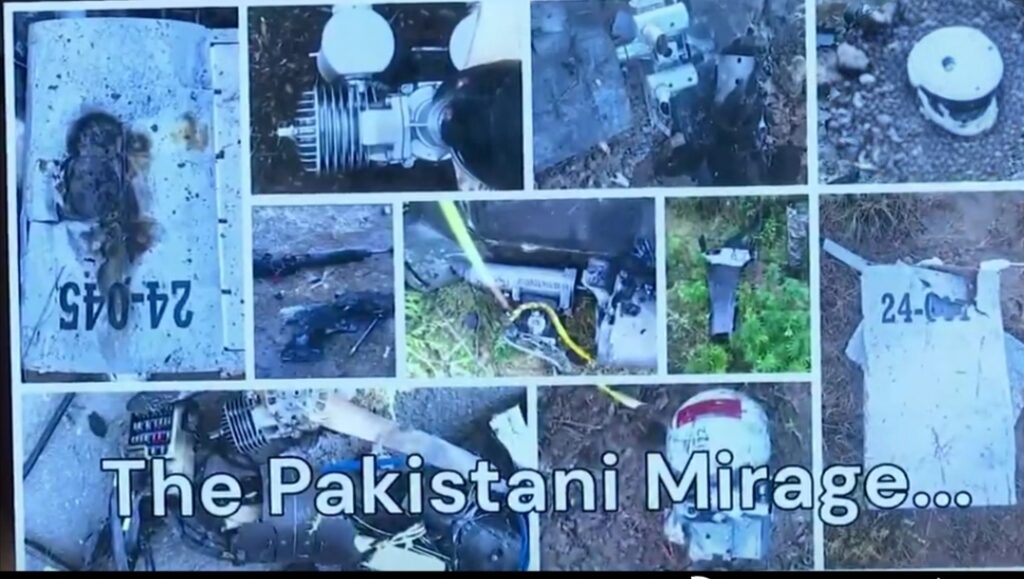
Drawing a vivid analogy to cricket, Ghai underscored India’s multi-layered air defense system, likening it to the formidable Australian bowling duo of the 1970s.
“Targeting our airfields and logistics is way too tough… In the 1970s, during the Ashes, Australia said, ‘Ashes to ashes, dust to dust, if Thommo don’t get ya, Lillee must.’
Even if you cross all the layers, one of the layers of this grid system will hit you,” he said, emphasizing the resilience of India’s integrated defense architecture.
Indian Air Force’s Precision and Indigenous Prowess
Air Marshal AK Bharti, a decorated fighter pilot and Director General Air Operations, detailed the Indian Air Force’s (IAF) pivotal role in Operation Sindoor. He presented satellite imagery and missile impact videos showcasing the destruction of terror camps in Bahawalpur and Muridke, as well as strikes on Pakistani airbases like Rahim Yar Khan and Nur Khan, which left visible craters. “Our battle-proven systems stood the test of time and took them head-on. The objectives of decimating terrorist camps were achieved with a thumping yes,” Bharti stated, confirming that all IAF pilots returned safely.
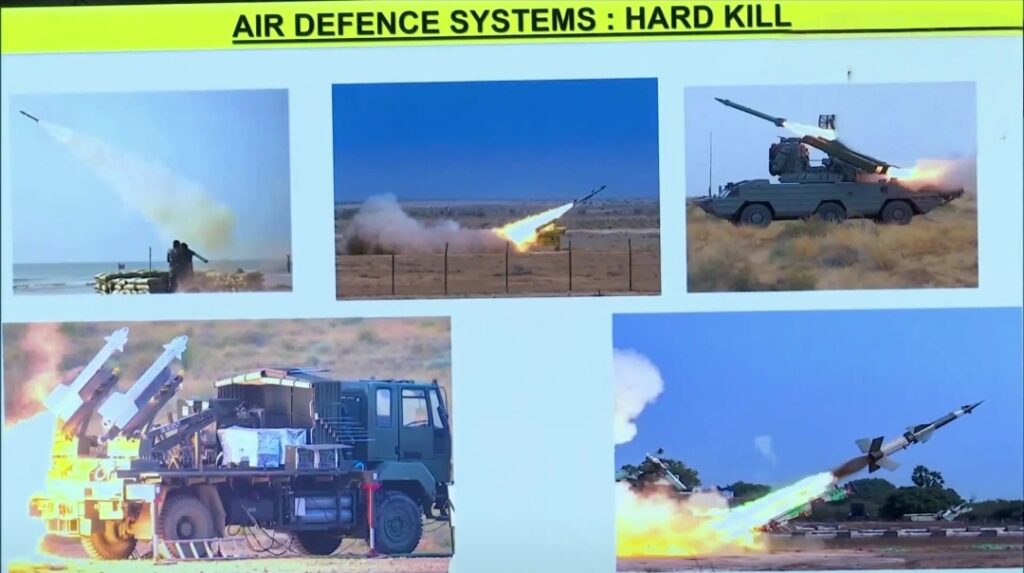
A key highlight was the stellar performance of the indigenous Akash surface-to-air missile system, which Bharti credited for thwarting Pakistani drone and missile attacks. “Numerous waves of drones and unmanned combat aerial vehicles employed by Pakistan were thwarted by our indigenously developed soft and hard kill counter-UAS systems and well-trained Indian Air Defence personnel,” he said. The Akash system, developed by the Defence Research and Development Organisation (DRDO) and operational since 2019, successfully intercepted multiple targets, including Turkish-origin YIHA and Songar drones and a Chinese-origin PL-15 air-to-air missile used by Pakistan. Samba Times has already shown u the video of this missile in the fields.
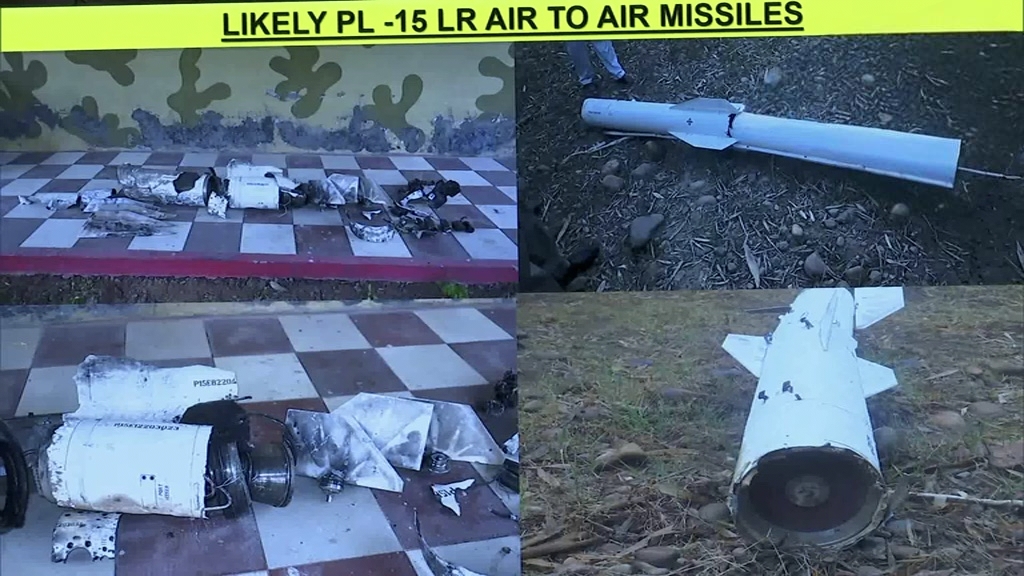
Bharti attributed this success to a decade of budgetary and policy support from the Government of India, which has bolstered India’s air defense environment.
Bharti also addressed Pakistan’s airspace violations on May 7-9, which included drone swarms and helicopter surveillance targeting Indian cities and military installations. He noted that India’s integrated air command and control systems, including legacy systems like Pechora, neutralized these threats without ground damage. In retaliation, the IAF struck Pakistani radar installations in Lahore and Gujranwala, maintaining a “precise and calibrated” response. “It is a pity that the Pakistani military chose to intervene for terrorists, and hence we chose to respond,” Bharti remarked, clarifying that India’s fight was against terror infrastructure, not the Pakistani military.
On speculative reports about Rafale jets being downed, Bharti acknowledged that “losses are a part of any combat scenario” but refrained from confirming details, emphasizing mission success and ongoing combat operations. He also highlighted the IAF’s readiness, stating, “All our military bases and systems remain fully operational and ready to undertake any future missions should the need arise.”
Navy’s Strategic Deterrence and Layered Defense
Vice Admiral AN Pramod, Director General Naval Operations, outlined the Indian Navy’s critical contributions to Operation Sindoor. Following the Pahalgam attack, the Navy deployed its Carrier Battle Group, surface forces, submarines, and aviation assets to the northern Arabian Sea within 96 hours, maintaining a “decisive and deterrent posture” capable of striking targets like Karachi. “Effectively using multiple sensors and inputs, we are maintaining continuous surveillance to degrade or neutralize threats as they emerge, ensuring targeting at extended ranges,” Pramod said.
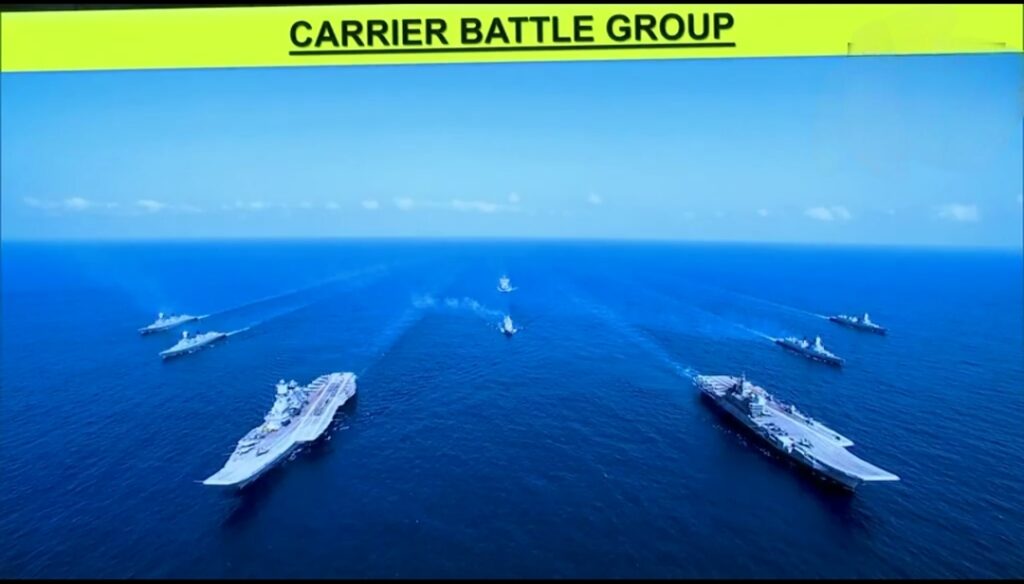
He described the Navy’s “comprehensive and effective layered fleet air defense mechanism,” designed to counter drones, high-speed missiles, and aircraft, including fighters and surveillance planes. This layered approach ensured maritime domain awareness and readiness for offensive action if provoked. Pramod issued a stern warning: “If Pakistan dares to take any action, they know what we are going to do,” hinting at India’s capability to escalate decisively.
A New Era of Warfare and India’s Resolve
The briefing underscored the evolving nature of modern warfare, with Bharti noting, “This was a different kind of warfare and is bound to happen. God forbid, but if we fight another war, it would be completely different from this one. It is a cat-and-mouse game, and we need to be ahead of the curve to beat the adversary.” The use of advanced drones, missiles, and electronic warfare by both sides highlighted the technological intensity of the conflict.
The commanders paid solemn tribute to five Indian soldiers killed during Operation Sindoor and civilians affected by Pakistani shelling, with Ghai expressing condolences to their families. Despite a bilateral understanding reached on May 10 to cease hostilities, Pakistan violated the agreement within hours, prompting India to send a hotline message warning of “fierce and punitive” responses to further violations. A DGMO-level talk, initially scheduled for noon on May 12, was deferred to the evening, reflecting ongoing tensions.
Strategic Implications and Unified Doctrine
The joint briefing by the DGMO, DG Air Operations, and DG Naval Operations signaled a fundamental shift in India’s security doctrine, moving beyond retaliation to a proactive, unified strategy. The operation’s success, marked by precision strikes, indigenous technology, and tri-service coordination, was presented as a clear message to adversaries. “I’m not concerned about what Pakistan will do. I’m concerned about what we will do. We have a roadmap and a plan, and we will follow it to a T,” Ghai declared, reinforcing India’s resolve.
The display of debris from downed Pakistani drones and missiles, including the Chinese PL-15 and Turkish YIHA and Songar, highlighted India’s defensive capabilities and technological edge. The briefing also addressed civilian safety concerns, with Ghai noting Pakistan’s “insensitive” use of civilian airspace during attacks, contrasting it with India’s restraint in avoiding collateral damage.
As Operation Sindoor continues, the Indian Armed Forces remain vigilant, with all bases fully operational and prepared for any escalation. The briefing concluded with a reaffirmation of India’s commitment to combating terrorism and safeguarding its sovereignty, backed by a robust, layered defense system and a unified military strategy.
Rahul Sambyal ✍️
Executive Editor
Samba Times
भारतीय सशस्त्र बलों ने ऑपरेशन सिंदूर की सफलता पर विस्तृत प्रेस ब्रीफिंग दी
नई दिल्ली, 12 मई 2025 – राष्ट्रीय मीडिया केंद्र में आयोजित एक महत्वपूर्ण संयुक्त प्रेस ब्रीफिंग में, भारतीय सेना, वायुसेना और नौसेना के वरिष्ठ कमांडरों ने 7 मई 2025 को शुरू किए गए ऑपरेशन सिंदूर का व्यापक अवलोकन प्रस्तुत किया। यह ऑपरेशन 22 अप्रैल को पहलगाम आतंकी हमले के जवाब में शुरू किया गया था, जिसमें 26 लोगों की जान गई थी। ब्रीफिंग का नेतृत्व सैन्य संचालन महानिदेशक (डीजीएमओ) लेफ्टिनेंट जनरल राजीव घई, वायु संचालन महानिदेशक एयर मार्शल अवधेश कुमार भारती और नौसेना संचालन महानिदेशक वाइस एडमिरल एएन प्रमोद ने किया। उन्होंने भारत की मजबूत सैन्य क्षमता, रणनीतिक सटीकता और तीनों सेनाओं के समन्वय को रेखांकित किया।
ऑपरेशन सिंदूर: आतंकवाद के खिलाफ निर्णायक जवाब
लेफ्टिनेंट जनरल राजीव घई ने ब्रीफिंग की शुरुआत आतंकवाद के बदलते स्वरूप पर जोर देकर की। उन्होंने कहा, “पिछले कुछ वर्षों में आतंकी गतिविधियों का चरित्र बदल गया है। निर्दोष नागरिकों को निशाना बनाया जा रहा था। पहलगाम तक पाप का ये घड़ा भर चुका था।” उन्होंने पुष्टि की कि ऑपरेशन सिंदूर ने पाकिस्तान और पाकिस्तान अधिकृत जम्मू-कश्मीर (पीओजेके) में नौ आतंकी ठिकानों को निशाना बनाया, जिसमें 100 से अधिक आतंकवादी मारे गए, जिनमें यूसुफ अजहर, अब्दुल मलिक रऊफ और मुदासिर अहमद जैसे हाई-प्रोफाइल आतंकी शामिल थे, जो 1999 के IC814 अपहरण और 2019 के पुलवामा हमले से जुड़े थे।
घई ने ऑपरेशन की सावधानीपूर्वक योजना पर प्रकाश डाला, जिसमें “आतंकी परिदृश्य की सूक्ष्म जांच” शामिल थी, ताकि मुरिदके और बहावलपुर जैसे आतंकी ठिकानों को नष्ट किया जा सके, जो अजमल कसाब जैसे आतंकियों को प्रशिक्षित करने के लिए कुख्यात हैं। उन्होंने बताया कि पाकिस्तान की प्रतिक्रिया, जिसमें नियंत्रण रेखा (एलओसी) का उल्लंघन और नागरिकों पर हमले शामिल थे, एक “घबराए और अनियमित” प्रतिद्वंद्वी को दर्शाती थी। 7 से 10 मई के बीच 35-40 पाकिस्तानी सैन्यकर्मी मारे गए।
क्रिकेट का एक रोचक उदाहरण देते हुए, घई ने भारत की बहु-स्तरीय वायु रक्षा प्रणाली की तुलना 1970 के दशक के ऑस्ट्रेलियाई गेंदबाजों से की। “हमारे हवाई अड्डों और लॉजिस्टिक्स को निशाना बनाना बहुत मुश्किल है… 1970 के दशक में एशेज के दौरान ऑस्ट्रेलिया ने कहा था, ‘एशेज टू एशेज, डस्ट टू डस्ट, अगर थॉमो नहीं तो लिली जरूर।’ अगर आप सभी परतों को पार भी कर लें, तो इस ग्रिड सिस्टम की कोई न कोई परत आपको मार गिराएगी,” उन्होंने कहा।
भारतीय वायुसेना की सटीकता और स्वदेशी शक्ति
एयर मार्शल एके भारती, एक सम्मानित फाइटर पायलट, ने ऑपरेशन सिंदूर में भारतीय वायुसेना (आईएएफ) की महत्वपूर्ण भूमिका को विस्तार से बताया। उन्होंने बहावलपुर और मुरिदके में आतंकी शिविरों के विनाश और रहीम यार खान और नूर खान जैसे पाकिस्तानी हवाई अड्डों पर हमलों को दर्शाने वाली सैटेलाइट तस्वीरें और मिसाइल प्रभाव के वीडियो प्रस्तुत किए। “हमारे युद्ध-परीक्षित सिस्टम समय की कसौटी पर खरे उतरे और उन्होंने दुश्मन का सामना किया। आतंकी शिविरों को नष्ट करने का उद्देश्य पूरी तरह हासिल हुआ,” भारती ने कहा, यह पुष्टि करते हुए कि सभी आईएएफ पायलट सुरक्षित लौटे।
स्वदेशी आकाश सतह-से-हवा मिसाइल प्रणाली का शानदार प्रदर्शन एक प्रमुख आकर्षण रहा। भारती ने बताया, “पाकिस्तान द्वारा भेजे गए ड्रोन और मानवरहित युद्धक हवाई वाहनों की कई लहरों को हमारे स्वदेशी सॉफ्ट और हार्ड किल काउंटर-यूएएस सिस्टम और अच्छी तरह प्रशिक्षित वायु रक्षा कर्मियों ने विफल कर दिया।” रक्षा अनुसंधान और विकास संगठन (डीआरडीओ) द्वारा विकसित और 2019 से संचालित आकाश प्रणाली ने तुर्की मूल के YIHA और Songar ड्रोन और पाकिस्तान द्वारा उपयोग की गई चीनी मूल की PL-15 हवा-से-हवा मिसाइल सहित कई लक्ष्यों को सफलतापूर्वक रोका। भारती ने इस सफलता का श्रेय पिछले एक दशक में भारत सरकार के बजटीय और नीतिगत समर्थन को दिया।
भारती ने 7-9 मई को पाकिस्तान द्वारा हवाई क्षेत्र के उल्लंघन, जिसमें ड्रोन हमले और हेलीकॉप्टर निगरानी शामिल थी, पर भी चर्चा की। भारत के एकीकृत वायु कमान और नियंत्रण प्रणालियों, जैसे पेचोरा, ने इन खतरों को बिना जमीनी नुकसान के बेअसर कर दिया। जवाब में, आईएएफ ने लाहौर और गुजरांवाला में पाकिस्तानी रडार स्थापनाओं पर हमला किया। “यह अफसोसजनक है कि पाकिस्तानी सेना ने आतंकियों के लिए हस्तक्षेप किया, इसलिए हमें जवाब देना पड़ा,” भारती ने कहा, यह स्पष्ट करते हुए कि भारत की लड़ाई आतंकी ढांचे के खिलाफ थी, न कि पाकिस्तानी सेना के।
राफेल जेट के गिराए जाने की अटकलों पर भारती ने कहा कि “युद्ध में नुकसान स्वाभाविक है,” लेकिन उन्होंने विवरण की पुष्टि करने से इनकार कर दिया। उन्होंने कहा, “हमारे सभी सैन्य अड्डे और सिस्टम पूरी तरह कार्यरत हैं और भविष्य के किसी भी मिशन के लिए तैयार हैं।”
नौसेना की रणनीतिक निवारण और बहु-स्तरीय रक्षा
वाइस एडमिरल एएन प्रमोद ने ऑपरेशन सिंदूर में भारतीय नौसेना के योगदान को रेखांकित किया। पहलगाम हमले के बाद, नौसेना ने 96 घंटों के भीतर उत्तरी अरब सागर में अपने कैरियर बैटल ग्रुप, सतह बलों, पनडुब्बियों और विमानन संपत्तियों को तैनात किया, जिसने कराची जैसे लक्ष्यों पर हमला करने की “निर्णायक और निवारक” मुद्रा बनाए रखी। “कई सेंसर और इनपुट का प्रभावी उपयोग करते हुए, हम उभरते खतरों को कम करने या बेअसर करने के लिए निरंतर निगरानी बनाए हुए हैं,” प्रमोद ने कहा।
उन्होंने नौसेना के “व्यापक और प्रभावी बहु-स्तरीय बेड़ा वायु रक्षा तंत्र” का वर्णन किया, जो ड्रोन, हाई-स्पीड मिसाइलों और विमानों, जैसे लड़ाकू और निगरानी विमानों, से निपटने के लिए डिज़ाइन किया गया है। इसने समुद्री क्षेत्र में जागरूकता और आक्रामक कार्रवाई की तत्परता सुनिश्चित की। प्रमोद ने चेतावनी दी, “अगर पाकिस्तान कोई कार्रवाई करने की हिम्मत करता है, तो उन्हें पता है कि हम क्या करेंगे।”
युद्ध का नया युग और भारत का संकल्प
ब्रीफिंग में आधुनिक युद्ध की बदलती प्रकृति पर जोर दिया गया। भारती ने कहा, “यह एक अलग तरह का युद्ध था और ऐसा होना तय है। ईश्वर न करे, लेकिन अगर हमें कोई और युद्ध लड़ना पड़ा, तो वह इससे पूरी तरह अलग होगा। यह एक बिल्ली-चूहे का खेल है, और हमें प्रतिद्वंद्वी को हराने के लिए हमेशा आगे रहना होगा।” ड्रोन, मिसाइलों और इलेक्ट्रॉनिक युद्ध के उपयोग ने संघर्ष की तकनीकी तीव्रता को उजागर किया।
कमांडरों ने ऑपरेशन सिंदूर के दौरान शहीद हुए पांच भारतीय सैनिकों और पाकिस्तानी गोलाबारी से प्रभावित नागरिकों को श्रद्धांजलि दी। 10 मई को दोनों पक्षों के बीच युद्धविराम की सहमति के बावजूद, पाकिस्तान ने कुछ ही घंटों में इसका उल्लंघन किया, जिसके बाद भारत ने हॉटलाइन संदेश भेजकर “कठोर और दंडात्मक” जवाब की चेतावनी दी। 12 मई को दोपहर में प्रस्तावित डीजीएमओ-स्तरीय बातचीत को शाम तक के लिए टाल दिया गया।
रणनीतिक निहितार्थ और एकीकृत सिद्धांत
डीजीएमओ, डीजी वायु संचालन और डीजी नौसेना संचालन की संयुक्त ब्रीफिंग ने भारत की सुरक्षा नीति में एक मौलिक बदलाव का संकेत दिया, जो जवाबी कार्रवाई से आगे बढ़कर एक सक्रिय, एकीकृत रणनीति की ओर बढ़ रहा है। ऑपरेशन की सफलता, जिसमें सटीक हमले, स्वदेशी तकनीक और तीनों सेनाओं का समन्वय शामिल था, को प्रतिद्वंद्वियों के लिए एक स्पष्ट संदेश के रूप में प्रस्तुत किया गया। “मुझे इस बात की चिंता नहीं कि पाकिस्तान क्या करेगा। मुझे इस बात की चिंता है कि हम क्या करेंगे। हमारे पास एक रोडमैप और योजना है, और हम इसे पूरी तरह लागू करेंगे,” घई ने कहा।
गिराए गए पाकिस्तानी ड्रोन और मिसाइलों के मलबे, जैसे चीनी PL-15 और तुर्की YIHA और Songar, ने भारत की रक्षात्मक क्षमताओं और तकनीकी बढ़त को उजागर किया। ब्रीफिंग में नागरिक सुरक्षा के मुद्दों पर भी चर्चा हुई, जिसमें घई ने पाकिस्तान द्वारा नागरिक हवाई क्षेत्र के “असंवेदनशील” उपयोग की निंदा की।
जैसे-जैसे ऑपरेशन सिंदूर जारी है, भारतीय सशस्त्र बल सतर्क हैं, सभी अड्डे पूरी तरह कार्यरत हैं और किसी भी स्थिति के लिए तैयार हैं। ब्रीफिंग का समापन आतंकवाद से मुकाबला करने और भारत की संप्रभुता की रक्षा के लिए भारत की प्रतिबद्धता के साथ हुआ, जिसे एक मजबूत, बहु-स्तरीय रक्षा प्रणाली और एकीकृत सैन्य रणनीति का समर्थन प्राप्त है।
ऑपरेशन सिंदूर और भारत-पाकिस्तान संबंधों पर नवीनतम अपडेट के लिए बने रहें।



